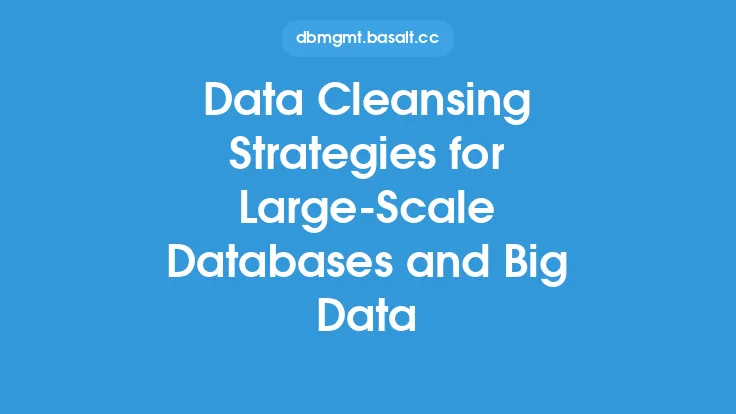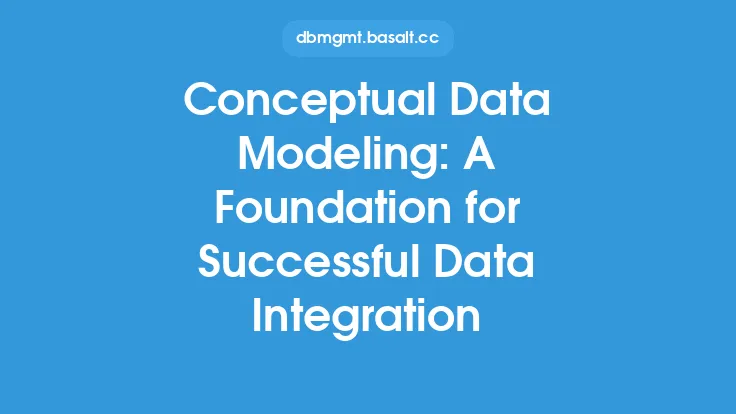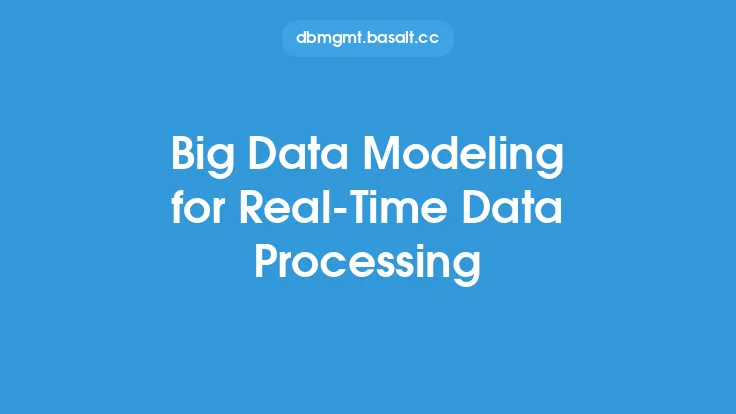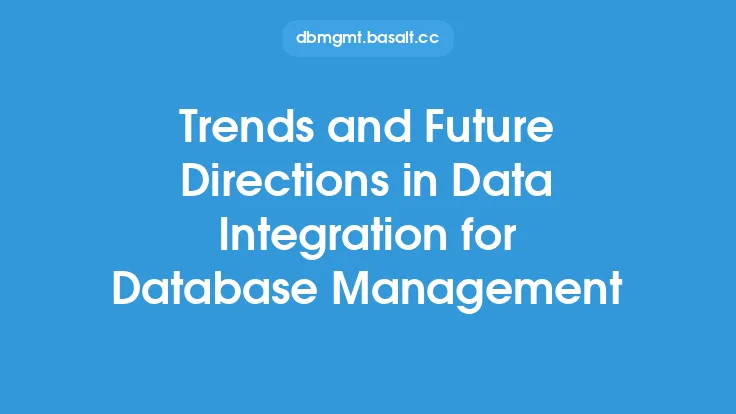When dealing with big data, one of the most critical steps in the data processing pipeline is data integration. This is the process of combining data from multiple sources into a unified view, which can then be used for analysis, reporting, and other business purposes. However, big data integration poses unique challenges due to the large volumes, high velocities, and diverse varieties of data involved. To overcome these challenges, effective data modeling strategies are essential. In this article, we will explore the key data modeling strategies for big data integration, highlighting their importance, benefits, and best practices.
Introduction to Data Modeling for Big Data Integration
Data modeling for big data integration involves creating a conceptual representation of the data, including its structure, relationships, and constraints. This model serves as a blueprint for the integration process, ensuring that the data is properly organized, transformed, and loaded into a target system. A well-designed data model is crucial for big data integration, as it enables data consistency, reduces data redundancy, and improves data quality. Furthermore, a good data model facilitates data sharing, reuse, and governance, which are critical for big data analytics and decision-making.
Data Modeling Techniques for Big Data Integration
Several data modeling techniques are applicable to big data integration, including entity-relationship modeling, dimensional modeling, and object-oriented modeling. Entity-relationship modeling is a traditional approach that focuses on identifying entities, attributes, and relationships between them. Dimensional modeling, on the other hand, is optimized for data warehousing and business intelligence applications, emphasizing facts and dimensions. Object-oriented modeling is a more modern approach that represents data as objects with properties and behaviors. Each technique has its strengths and weaknesses, and the choice of technique depends on the specific requirements of the big data integration project.
Data Warehousing and Big Data Integration
Data warehousing is a critical component of big data integration, as it provides a centralized repository for storing and managing large volumes of data. A data warehouse is a structured repository that stores data in a way that facilitates querying, analysis, and reporting. When designing a data warehouse for big data integration, it is essential to consider the data modeling techniques mentioned earlier, as well as the data governance and quality aspects. A well-designed data warehouse enables fast and efficient data integration, reduces data redundancy, and improves data quality. Additionally, data warehousing enables data sharing and reuse, which are critical for big data analytics and decision-making.
NoSQL Data Modeling for Big Data Integration
NoSQL databases have become increasingly popular for big data integration due to their flexibility, scalability, and performance. NoSQL data modeling involves designing data structures that are optimized for NoSQL databases, such as key-value stores, document-oriented databases, and graph databases. NoSQL data modeling requires a deep understanding of the data and the specific requirements of the big data integration project. When designing a NoSQL data model, it is essential to consider the data distribution, data replication, and data consistency aspects. A well-designed NoSQL data model enables fast and efficient data integration, improves data quality, and reduces data redundancy.
Data Governance and Quality for Big Data Integration
Data governance and quality are critical aspects of big data integration, as they ensure that the data is accurate, complete, and consistent. Data governance involves defining policies, procedures, and standards for data management, while data quality involves ensuring that the data meets the required standards. When designing a data model for big data integration, it is essential to consider the data governance and quality aspects, such as data validation, data cleansing, and data transformation. A well-designed data model enables data governance and quality, which are critical for big data analytics and decision-making.
Best Practices for Data Modeling in Big Data Integration
To ensure successful big data integration, several best practices should be followed when designing a data model. First, it is essential to understand the business requirements and the specific needs of the big data integration project. Second, a thorough analysis of the data should be performed to identify the data sources, data structures, and data relationships. Third, a data modeling technique should be chosen based on the specific requirements of the project. Fourth, data governance and quality aspects should be considered to ensure that the data is accurate, complete, and consistent. Finally, the data model should be continuously monitored and updated to reflect changes in the business requirements and the data landscape.
Tools and Technologies for Data Modeling in Big Data Integration
Several tools and technologies are available to support data modeling in big data integration, including data modeling software, data integration platforms, and NoSQL databases. Data modeling software, such as Entity-Relationship Diagram (ERD) tools, provides a graphical interface for designing and managing data models. Data integration platforms, such as Apache NiFi and Apache Beam, provide a scalable and flexible framework for integrating and processing large volumes of data. NoSQL databases, such as MongoDB and Cassandra, provide a flexible and scalable data storage solution for big data integration. When choosing a tool or technology, it is essential to consider the specific requirements of the big data integration project, as well as the scalability, performance, and cost aspects.
Conclusion
In conclusion, data modeling is a critical aspect of big data integration, as it enables data consistency, reduces data redundancy, and improves data quality. Several data modeling techniques are applicable to big data integration, including entity-relationship modeling, dimensional modeling, and object-oriented modeling. When designing a data model for big data integration, it is essential to consider the data governance and quality aspects, as well as the specific requirements of the project. By following best practices and using the right tools and technologies, organizations can ensure successful big data integration and unlock the full potential of their data assets.





